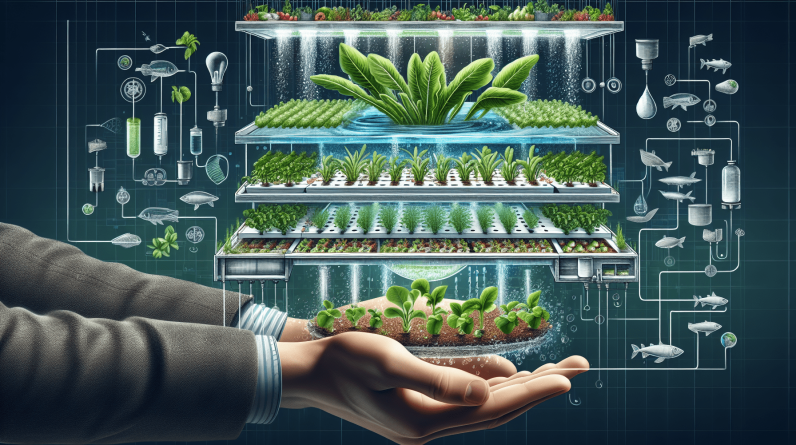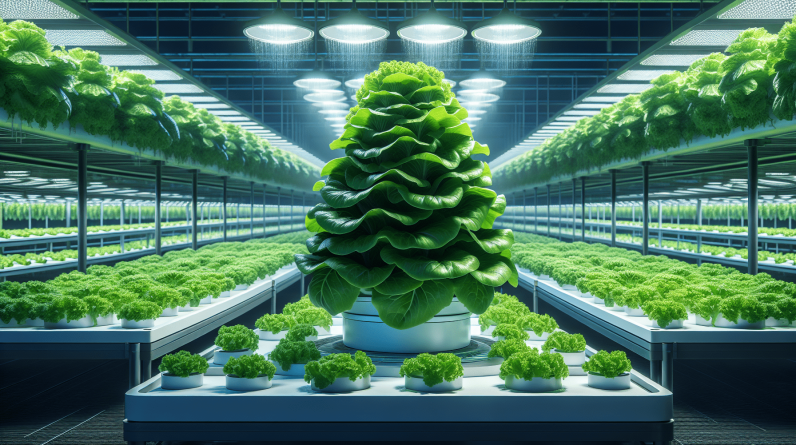
Are you looking to enhance your gardening experience and increase your crop yield? Have you considered exploring hydroponic growing systems? In this article, we will delve into the numerous benefits of hydroponics and why it might be the perfect solution for your gardening needs.

This image is property of images.unsplash.com.
Understanding Hydroponic Growing Systems
Hydroponic growing systems utilize a nutrient-rich solution to deliver essential plant nutrients directly to the roots, without the need for soil. This method allows plants to grow faster and produce higher yields compared to traditional soil gardening.
Have you ever wondered how plants can thrive without soil? Hydroponic growing systems provide all the necessary nutrients directly to the roots, resulting in faster growth and increased crop yield.
Advantages of Hydroponic Systems
One of the key advantages of hydroponic systems is their ability to conserve water, using up to 90% less water than traditional soil gardening. This efficient use of water makes hydroponics a sustainable option for cultivating crops, especially in regions facing water scarcity.
By providing a controlled environment for plant growth, hydroponic systems allow for year-round cultivation regardless of external weather conditions. This means you can enjoy a continuous supply of fresh produce throughout the year, even in adverse weather conditions.
Health Benefits of Hydroponic Crops
Plants grown in hydroponic systems are less susceptible to soil-borne diseases and pests, resulting in healthier plants with minimal chemical inputs. By eliminating the need for soil, hydroponics reduce the risk of plant diseases and pests that can affect crop quality.
The nutrient-rich solution used in hydroponic systems ensures that plants receive all the essential nutrients they need to grow and thrive. As a result, hydroponic crops are often more nutritious and flavorful than conventionally grown produce.
Types of Hydroponic Growing Systems
There are several types of hydroponic systems, each with its own advantages and applications. Understanding the different types of hydroponic systems can help you choose the best option based on your gardening goals and available space.
Deep Water Culture (DWC) Systems
Deep Water Culture systems suspend plant roots in a nutrient solution, allowing for continuous nutrient uptake. This type of system is simple to set up and ideal for beginners looking to experiment with hydroponics.
DWC systems are a popular choice among beginners due to their simplicity and ease of maintenance. By suspending plant roots in a nutrient solution, DWC systems provide ample oxygen and nutrients for healthy plant growth.
Nutrient Film Technique (NFT) Systems
Nutrient Film Technique systems use a continuous flow of nutrient solution to provide essential nutrients to plant roots. This method allows for efficient nutrient uptake and is commonly used for leafy greens and herbs.
NFT systems are ideal for growing leafy greens and herbs due to their efficient nutrient delivery system. By allowing a continuous flow of nutrient solution along plant roots, NFT systems ensure optimal nutrient uptake for healthy plant growth.
Ebb and Flow Systems
Ebb and Flow systems periodically flood plant roots with a nutrient solution before draining it back into a reservoir. This cycle helps aerate the roots and prevents waterlogging, making it suitable for a wide range of crops.
Ebb and Flow systems offer versatility in crop cultivation, making them ideal for growing a variety of plants. By periodically flooding plant roots with nutrient solution, Ebb and Flow systems promote healthy root growth and prevent waterlogging.
Aeroponic Systems
Aeroponic systems mist plant roots with a nutrient solution, allowing for efficient nutrient uptake and oxygenation. This method conserves water and nutrients while promoting rapid growth and high yields.
Aeroponic systems are known for their efficiency in nutrient delivery and oxygenation, resulting in rapid plant growth and increased crop yields. By misting plant roots with a nutrient solution, Aeroponic systems ensure plants receive all the essential nutrients they need to thrive.

This image is property of images.unsplash.com.
Setting Up a Hydroponic System
Setting up a hydroponic system may seem daunting at first, but with the right guidance, you can create your own thriving hydroponic garden. Here are some key steps to consider when setting up a hydroponic system:
1. Choose the Right Location
Select a suitable location for your hydroponic system that receives adequate sunlight and is well-ventilated. Ensure that the area is easily accessible for maintenance and nutrient replenishment.
Choosing the right location for your hydroponic system is crucial for the success of your plants. Make sure to select a spot that receives sufficient sunlight and is well-ventilated to promote healthy plant growth.
2. Select the Appropriate System
Decide on the type of hydroponic system that best fits your gardening goals and available space. Consider factors such as the number of plants you wish to grow, your experience level, and the crops you want to cultivate.
Choosing the appropriate hydroponic system is essential for the success of your garden. Take into account your gardening goals, experience level, and crop preferences when selecting a system that suits your needs.
3. Gather Necessary Supplies
Collect all the necessary supplies for your hydroponic system, including containers, nutrient solution, growing medium, and plant nutrients. Ensure that you have everything you need before setting up your system to avoid any delays.
Having all the required supplies on hand is essential for the smooth setup of your hydroponic system. Make a checklist of items you need, such as containers, nutrient solutions, and growing medium, to ensure you have everything ready.
4. Set Up the System
Follow the manufacturer’s instructions or guidelines to set up your chosen hydroponic system correctly. Pay attention to details such as nutrient solution concentration, pH levels, and lighting requirements to ensure optimal plant growth.
Setting up your hydroponic system according to the manufacturer’s instructions is crucial for its success. Pay attention to details such as nutrient solution concentration, pH levels, and lighting requirements to provide the best growing conditions for your plants.
5. Monitor Plant Growth
Regularly monitor plant growth and health to identify any issues or nutrient deficiencies. Adjust nutrient levels, lighting, and other factors as needed to ensure your plants thrive and produce healthy crops.
Monitoring plant growth is essential for maintaining a healthy hydroponic garden. Keep an eye on your plants to detect any signs of nutrient deficiencies or pest infestations, and make necessary adjustments to optimize plant health and yield.

This image is property of images.unsplash.com.
Conclusion
In conclusion, hydroponic growing systems offer a range of benefits that make them a sustainable and efficient choice for modern gardening. By providing plants with direct access to essential nutrients, eliminating soil-borne diseases and pests, and conserving water, hydroponics enable gardeners to grow fresh, nutritious crops year-round.
If you are looking to enhance your gardening experience and increase your crop yield, consider exploring the world of hydroponics. With the right knowledge and tools, you can set up your own hydroponic system and enjoy the numerous benefits it offers. Start your hydroponic gardening journey today and reap the rewards of this innovative and sustainable growing method.










